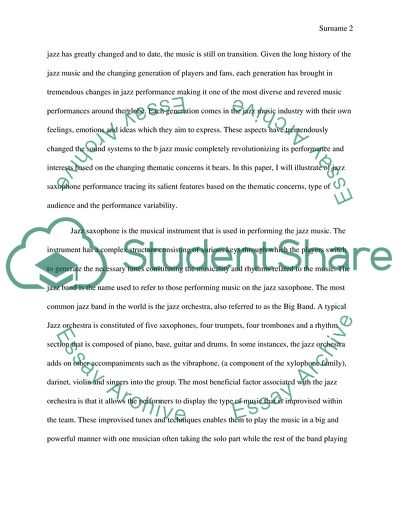Cite this document
(Neil Carson Jazz Saxophone Performance Essay Example | Topics and Well Written Essays - 2750 words, n.d.)
Neil Carson Jazz Saxophone Performance Essay Example | Topics and Well Written Essays - 2750 words. https://studentshare.org/music/1819175-neil-carson-jazz-saxophone
Neil Carson Jazz Saxophone Performance Essay Example | Topics and Well Written Essays - 2750 words. https://studentshare.org/music/1819175-neil-carson-jazz-saxophone
(Neil Carson Jazz Saxophone Performance Essay Example | Topics and Well Written Essays - 2750 Words)
Neil Carson Jazz Saxophone Performance Essay Example | Topics and Well Written Essays - 2750 Words. https://studentshare.org/music/1819175-neil-carson-jazz-saxophone.
Neil Carson Jazz Saxophone Performance Essay Example | Topics and Well Written Essays - 2750 Words. https://studentshare.org/music/1819175-neil-carson-jazz-saxophone.
“Neil Carson Jazz Saxophone Performance Essay Example | Topics and Well Written Essays - 2750 Words”. https://studentshare.org/music/1819175-neil-carson-jazz-saxophone.


